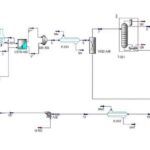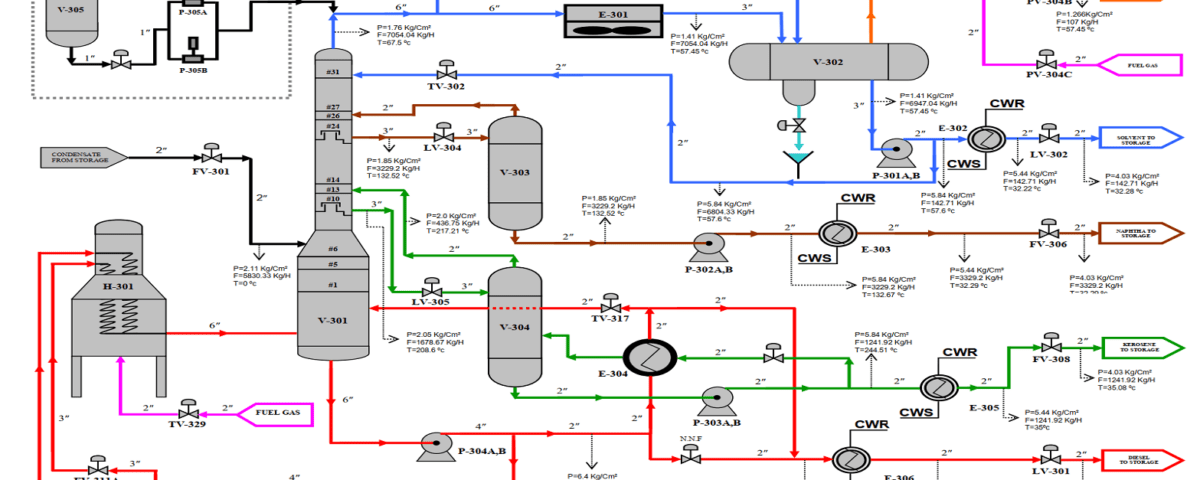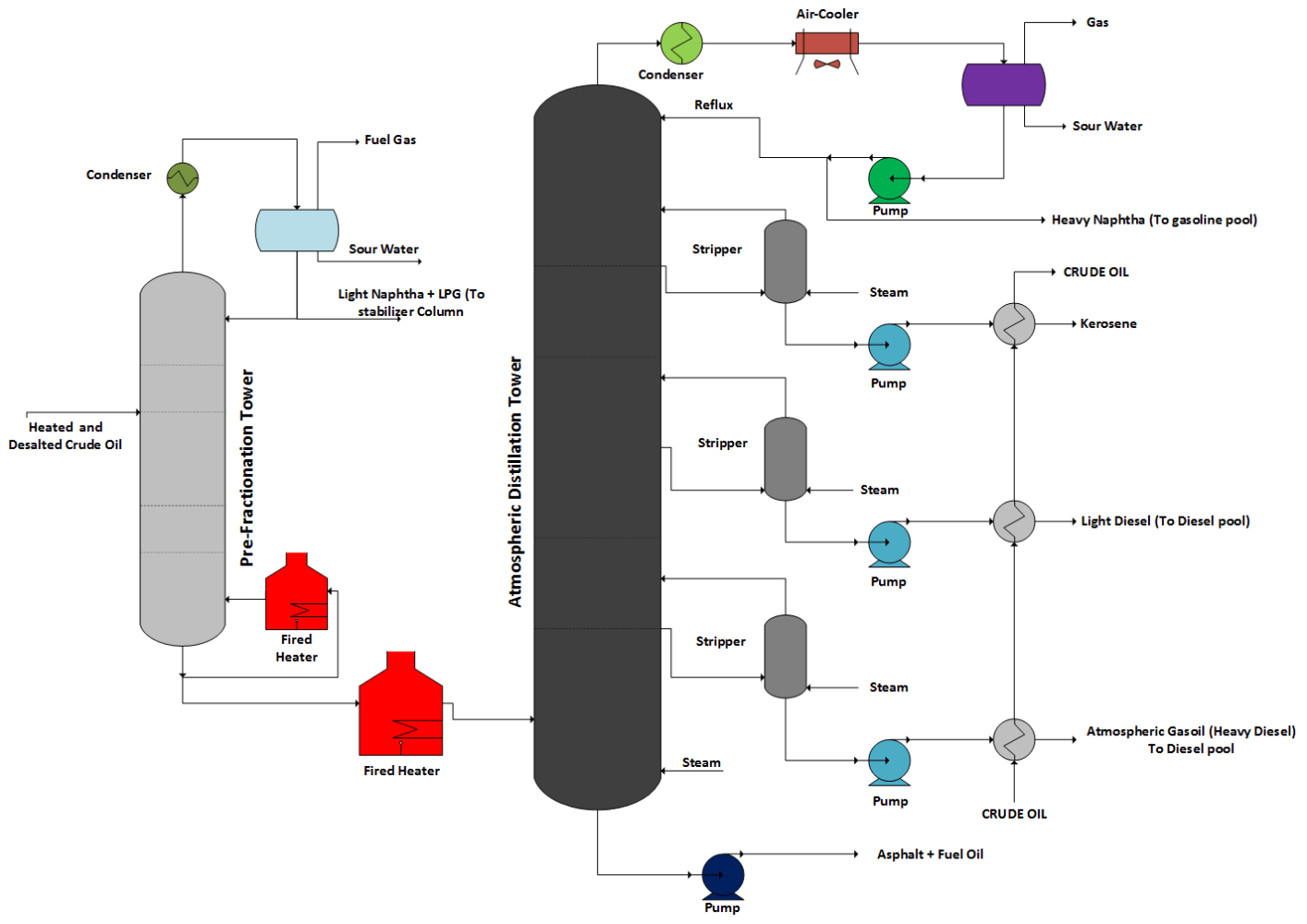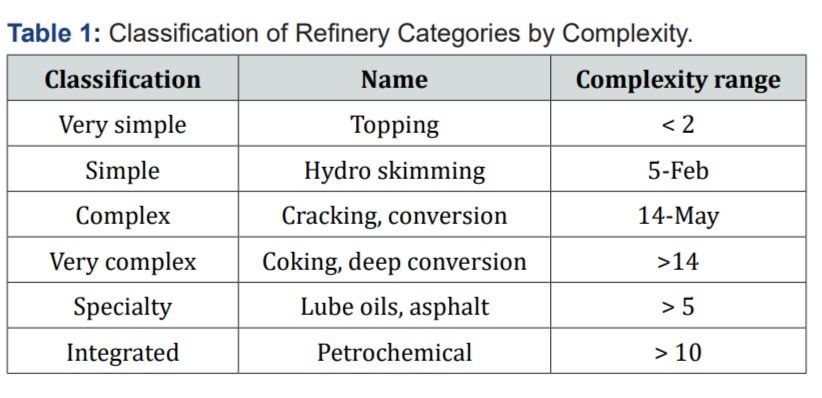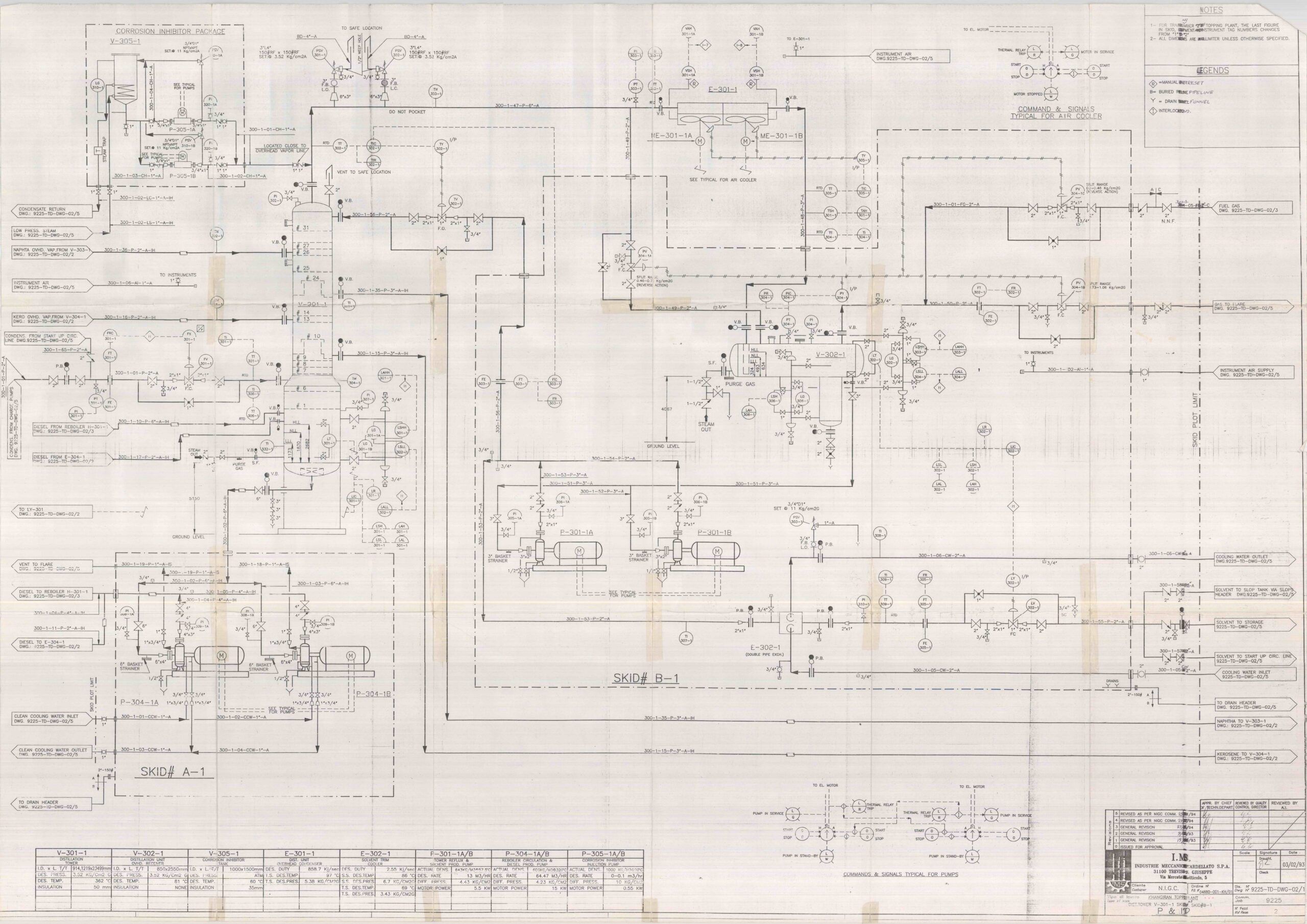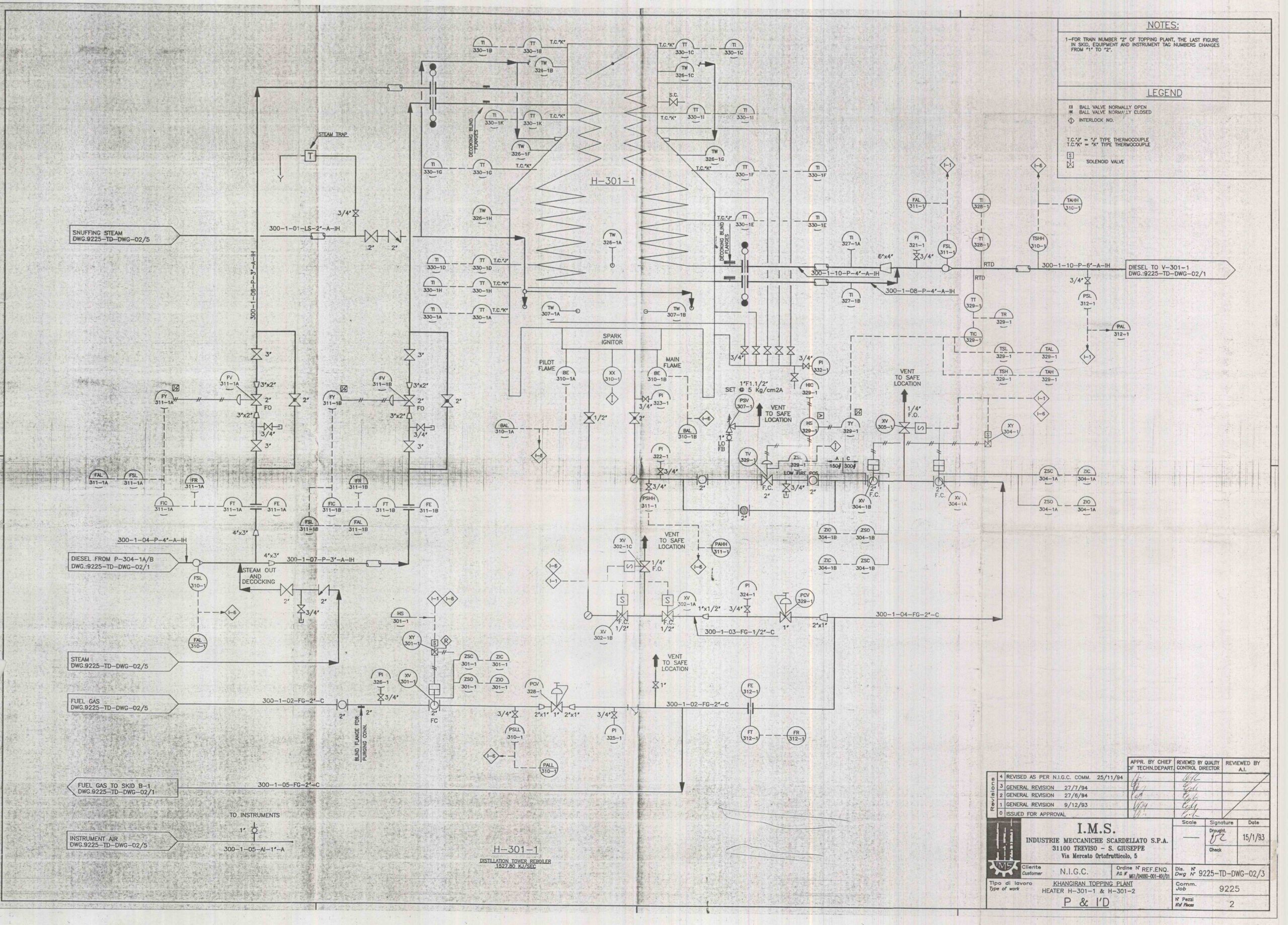Introduction
Oil refineries are the backbone of modern economies, powering industries, transportation, and households. Without their refined products, the world would grind to a halt. From the gasoline that fuels our cars to the jet fuel that propels airplanes, and the heating oil that warms our homes, refineries play a crucial role in our daily lives.
Primary distillation units (topping refineries), however, face inherent limitations in producing petroleum products that deviate from the natural composition of crude oil. When a significant portion of the output consists of low-value residues and other less desirable products, these units can become economically unviable. To address this challenge, strategies aimed at increasing revenue and reducing costs are essential.
One approach is to optimize efficiency and expand processing capacity. By processing lighter crude oils with higher API gravity, refineries can minimize the production of low-value residues and maximize the yield of higher-value products like kerosene and diesel. Additionally, investing in capacity expansion, despite requiring significant capital expenditure, can lead to economies of scale, reducing the unit cost per barrel of oil processed.
Processes in a Topping (Primary Distillation) Unit
A topping or primary distillation unit is the initial and most fundamental stage in crude oil refining. In this unit, crude oil is separated into various components based on their boiling points. The primary process within this unit is atmospheric distillation.
Atmospheric Distillation
Atmospheric distillation is a process wherein heated crude oil is introduced into a distillation tower, Within this tower, due to the varying boiling points of the components, the crude oil is separated and Lighter components such as gasoline ascend to the top of the tower, while heavier components like fuel oil accumulate at the bottom.
-
Crude Oil Preheating
- Objective: To elevate the crude oil’s temperature to near the boiling point of some of its components.
- Method: Crude oil is passed through heat exchangers and heated using the vapors of lighter products. This reduces energy consumption in the subsequent stage (furnace).
-
Vaporization in the Furnace
- Objective: To completely vaporize the crude oil.
- Method: Preheated crude oil enters a large furnace. Inside the furnace, burners fueled by a combustion process provide the necessary heat for complete vaporization.
-
Vapor Introduction into the Distillation Tower
- Objective: To separate the various components of crude oil based on their boiling points.
- Method: Vapors from the furnace enter the lower section of a cylindrical tower known as a distillation tower. This tower contains multiple trays, each with perforations and caps.
-
Separation within the Distillation Tower
- Separation Principle: As vapors ascend the tower, they cool. With decreasing temperature, heavier components condense into a liquid state and collect on the trays. Lighter components continue upward as vapors.
- Role of Trays: Trays serve as contact surfaces between vapor and liquid. Ascending vapors come into contact with the liquid on the tray, causing a portion of the vapor to condense and add to the liquid.
- Liquid Return: A portion of the liquid on each tray is returned to the tray below to enhance vapor-liquid contact and improve separation efficiency.
-
Product Withdrawal
- Side Products: At various levels of the tower, different products such as naphtha, gasoline, kerosene, and diesel are withdrawn as liquids.
- Bottom Product: The heaviest components remaining at the bottom of the tower are withdrawn as fuel oil.
- Top Vapors: The vapors of the lightest components reaching the top of the tower are condensed and collected as petroleum gases.
Primary Application of Topping Plants
The most common application of topping plants is to recover transportation fuels and heating fuels from remote areas with limited crude oil reserves.
Complexity of Refining Units
Topping units are less complex compared to full-scale refineries. They perform only primary distillation and basic support operations, lacking the capability to alter the natural product yield pattern from crude oil. This is the simplest refining configuration, designed to prepare feedstock for petrochemical production or to produce industrial fuels in remote oil-producing regions. Essentially, a topping unit is a distillation tower that divides crude oil into its primary components. Table 1 clearly illustrates the classification of refineries.
This study aims to design and simulate a topping unit of the Khangiran Refinery using industrial data and Aspen HYSYS software. By modeling this unit, it becomes possible to analyze the process behavior under various operating conditions, which can lead to improved performance and increased production efficiency. Additionally, the simulation can help identify the impact of various parameters such as temperature, pressure, and feedstock composition on the quality and quantity of the produced products.
This activity can serve as a decision-making tool for refinery managers to improve processes and enhance product quality.
KHANGIRAN Refinery at a Glance
The Khangiran Refinery consists of 5 refining units and 2 desalting units and The design capacity of each refining unit is 346,000 to 400,000 cubic meters per hour (58 million cubic meters per day), and the design capacity of the two desalting units is 7.6 million cubic meters per day.
The products of this refinery complex include:
- Light gas
- Liquefied petroleum gas (LPG)
- Distillation products (naphtha, kerosene, gas oil, and solvent)
- Sulfur
Due to the high level of toxic gases in the gas produced from the Mazduran field (3.5% H2S and 6.5% CO2), this refinery produces 2,640 tons of sulfur daily. It is worth noting that the refinery produces three LPG cuts:
- S-300: Sweet LPG from the Shourijeh desalting unit
- S-400: Sweet LPG from the Gonbadli desalting unit
- S-500: Sour LPG produced in the refining units
These liquid products are:
- Used as secondary fuel for high-pressure boilers.
- Used as feedstock for the distillation unit and converted into more valuable products. (To optimize the conversion and utilization of the aforementioned LPGs, two distillation units were also established in this refinery complex in 2004)
- A portion of it is also delivered to the National Iranian Oil Refining and Distribution Company for processing and distribution.
Simulation of the KHANGIRAN Refinery Topping Unit with Industrial Data
The Khangiran gas refinery distillation unit was constructed in 1993 in collaboration with I.M.S. and the National Iranian Gas Company (N.I.G.C.) to distill liquid hydrocarbons present in the gas produced from natural gas reservoirs in the region. The ultimate goal of constructing this unit was to convert liquid hydrocarbons into higher value-added products such as naphtha, solvent, kerosene, and diesel. In this project, considering the significant role of process simulation in analyzing the behavior of industrial processes, evaluating and feasibility studying structural changes and targeted design modifications in the unit, investigating and predicting the impact of changes in various operating variables on unit performance, and considering the low cost of simulation, the simulation of the Khangiran topping unit has been carried out. Aspen HYSYS software was used for the simulation.
P&ID (Piping and Instrumentation Diagram) Plant
P&ID stands for Piping and Instrumentation Diagram. It’s a detailed engineering drawing that shows the process equipment and instrumentation used to control a process. P&ID’s are essential tools in the process industries, including oil and gas, chemical, pharmaceutical, and food and beverage.
P&ID of Topping Unit of Khangiran Refinery
In the case of the Khangiran refinery’s Topping unit, P&ID diagrams depict the details of all pipes, valves, tanks, heat exchangers, pumps, measuring instruments, and controls involved in the process of distilling crude oil into various products. In this project, the P&IDs of the products exiting the unit’s tower, as well as the equipment and heaters of the Topping unit, are displayed.
-
Products Output from the Topping Unit Tower
-
P&ID of Topping Unit Equipment
-
P&ID of the Topping Unit Heater
Conclusion
The core process within a Topping unit is atmospheric distillation, which leverages the variance in boiling points to fractionate crude oil into its constituent components. The resulting products from this unit serve as feedstock for downstream refinery processes and are also marketed as finished goods. This project involved simulating a Topping unit using the Aspen Hysys software.
